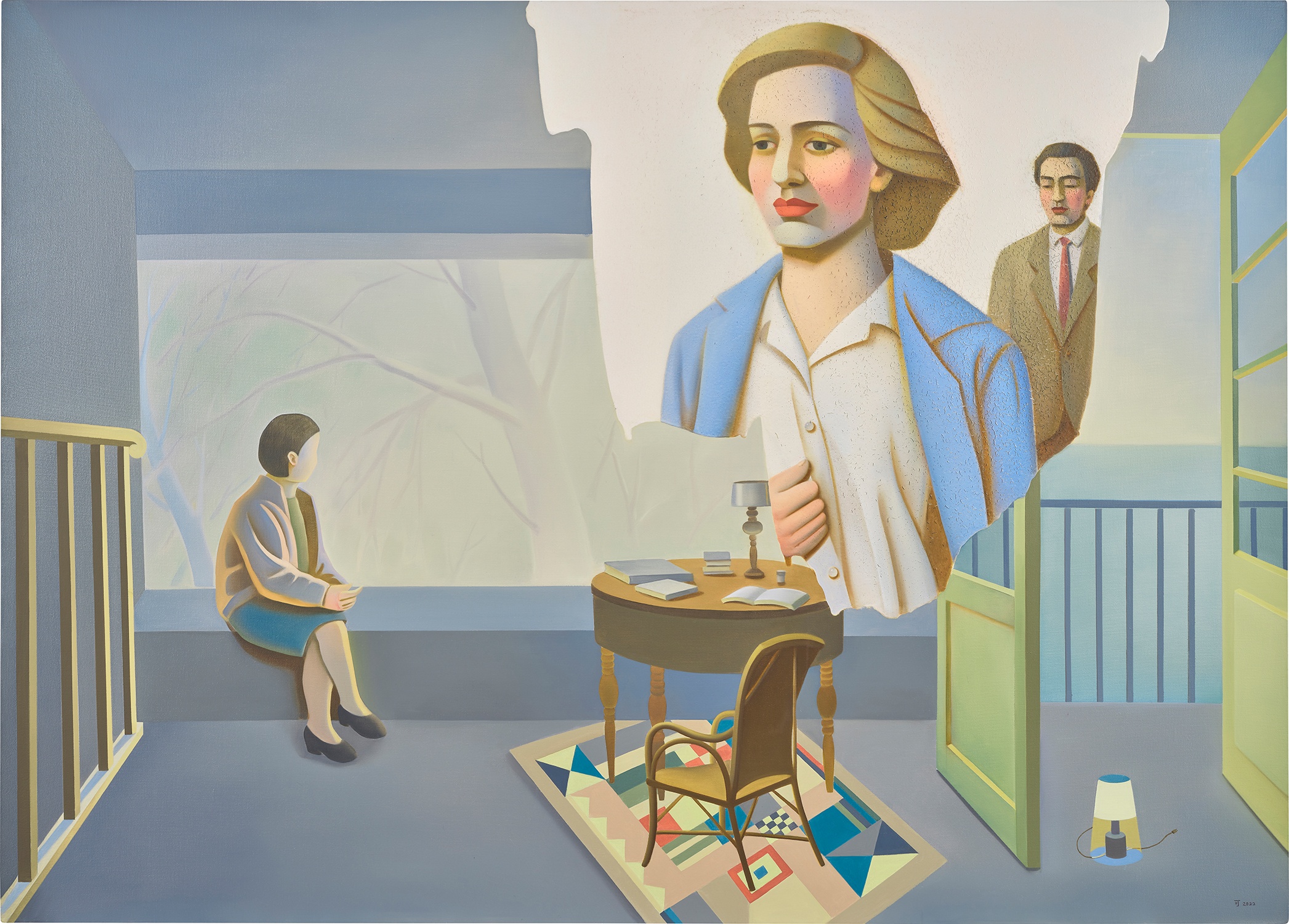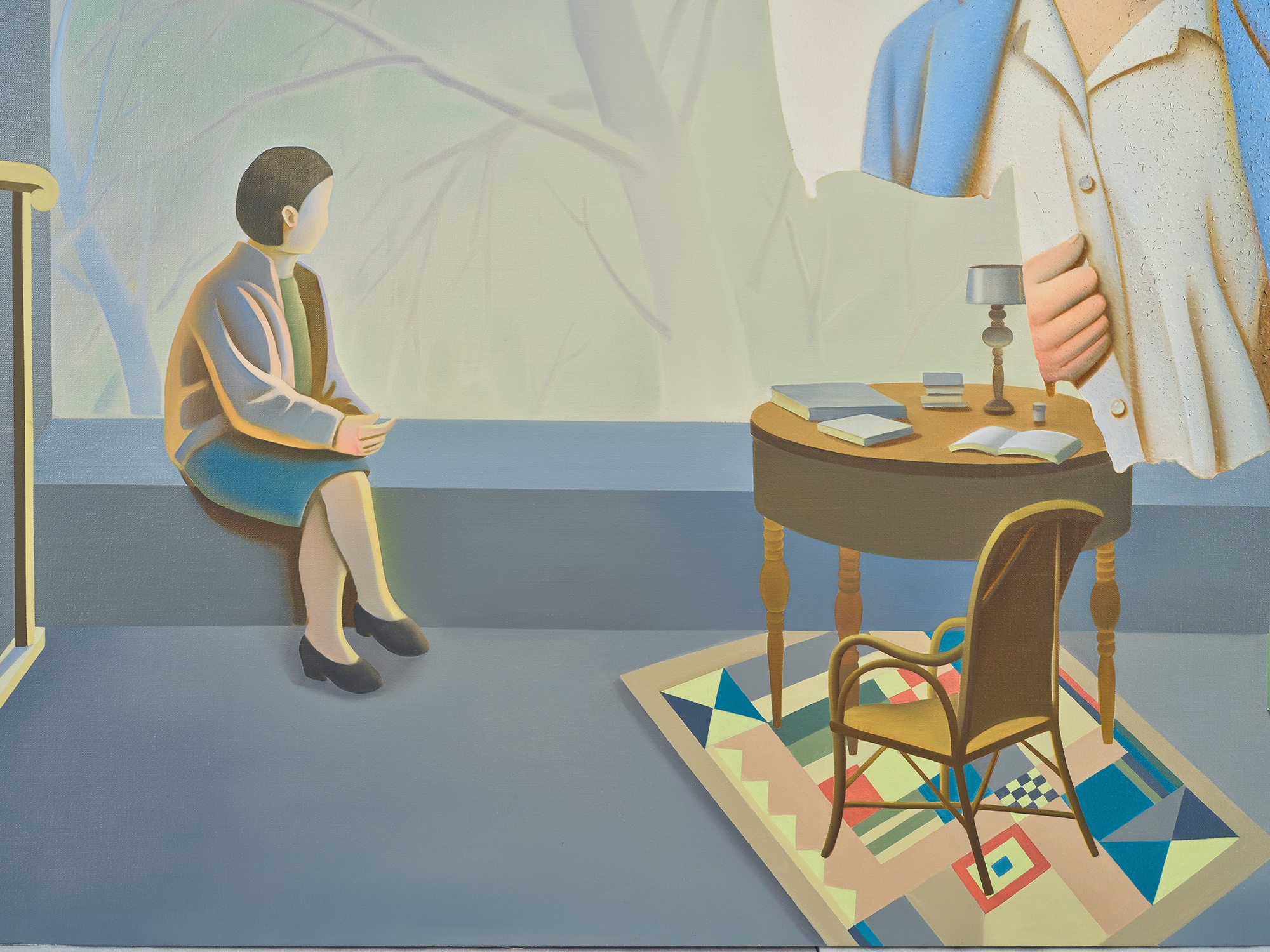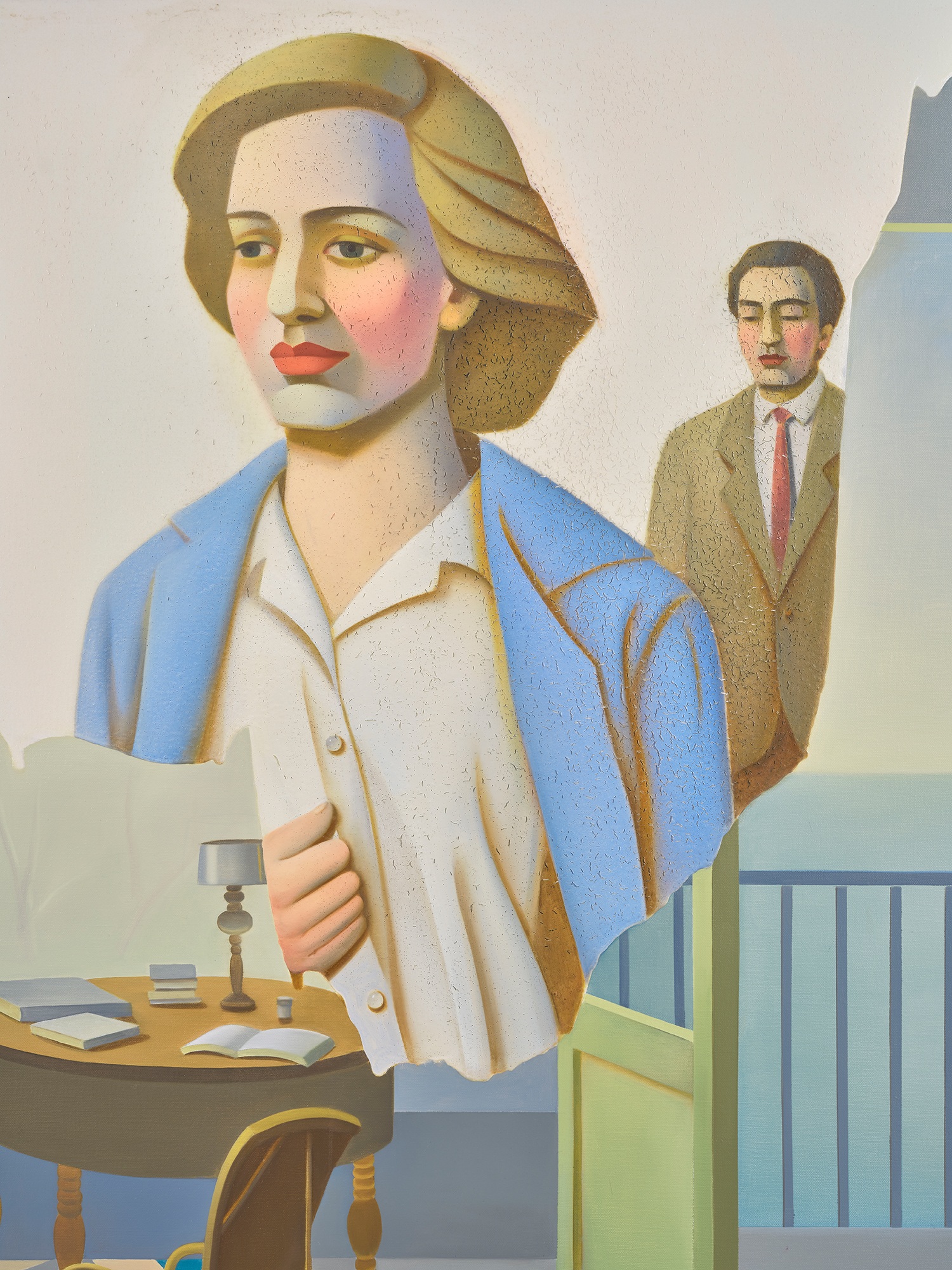







PROPERTY FROM AN IMPORTANT PRIVATE COLLECTION
37Ο◆Ж
Chen Ke
Outside the Window
signed and dated 'Chen Ke 2022' lower right; further signed, titled and dated '"Outside the Window" Chen Ke [in Chinese] Chen Ke 2022' on the reverse
oil and acrylic gesso on canvas
180 x 250 cm. (70 7/8 x 98 3/8 in.)
Painted in 2020, signed in 2022.